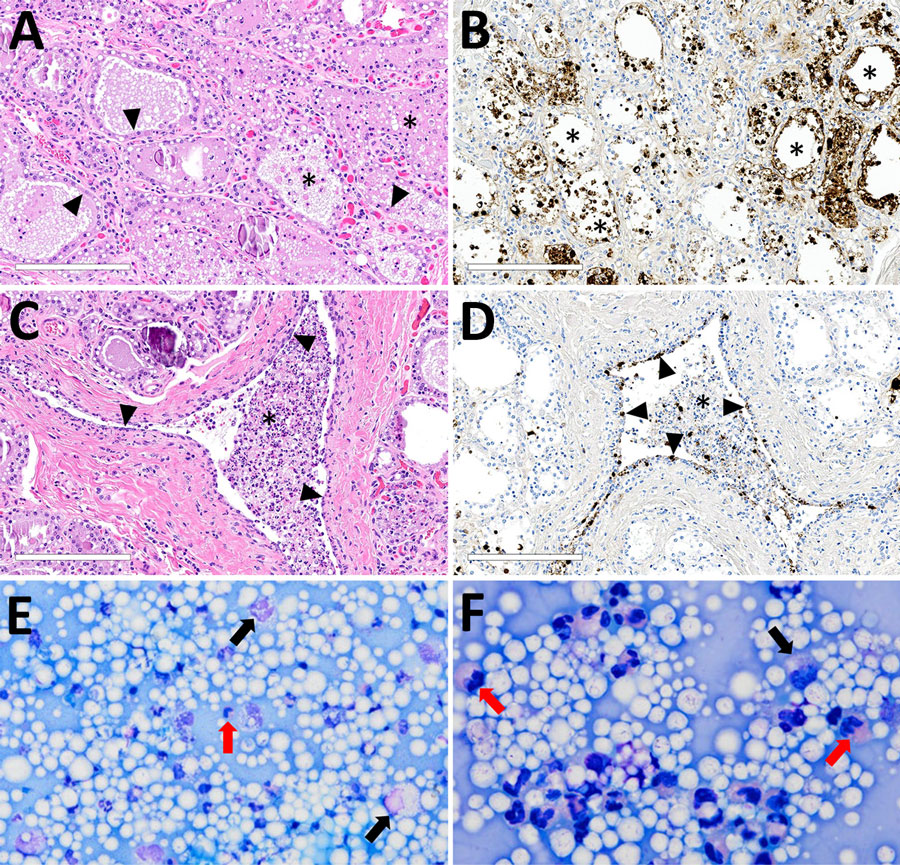Volume 30, Number 7—July 2024
Research
Sialic Acid Receptor Specificity in Mammary Gland of Dairy Cattle Infected with Highly Pathogenic Avian Influenza A(H5N1) Virus
Figure 1

Figure 1. Microscopic mammary lesions of an index case in US dairy cattle naturally infected with highly pathogenic avian influenza A(H5N1) virus clade 2.3.4.4b. A) Mammary gland alveoli show epithelial attenuation and vacuolation (arrows), leading to degeneration with intraluminal sloughing and neutrophilic intraluminal inflammation (asterisk). Hematoxylin and eosin stain. B) Mammary glad alveoli show degenerative epithelial cells (asterisks) and strong intracytoplasmic and nuclear immunoreactivity to influenza A virus nucleoprotein. C) Cuboidal epithelium lining of the interlobular duct was markedly attenuated (arrowheads) with abundant intraluminal sloughing and neutrophilic inflammation (asterisk). Hematoxylin and eosin stain. D) Interlobular duct shows of attenuating and degenerative epithelium by intranuclear and cytoplasmic immunoreactivity (brown labeling) with immunopositive intraluminal debris and inflammation (asterisk). Scale bars indicate 200 μm. E, F) Modified Wright's stained representative cytology images of milk from a dairy cow with highly pathogenic avian influenza A(H5N1) virus infection, demonstrating moderate to marked neutrophilic inflammation (red arrows) with low numbers of vacuolated macrophages (black arrows) among large numbers of lipid vacuoles. A 100-cell count was performed, and nucleated cells were found to consist of 83% neutrophils, 12% macrophages, and 5% lymphocytes. Original magnifications ×500 for panel E and ×1,000 for panel F.
1These first authors contributed equally to this article.